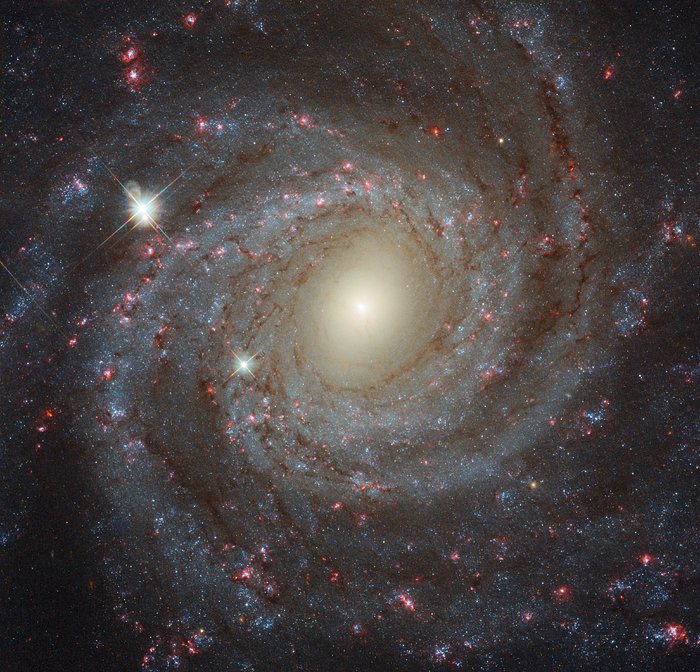Nasa's Hubble photo reveals breathtaking beauty of galaxy embracing baby stars 20 million light years away
The photo features the galaxy NGC 3344, which according to Hubble researchers, represents a "perfect galactic Valentine".
Nasa's Hubble telescope captured a stunning photo of a spiral galaxy, located 20 million light years away. The photo reveals young stars basking in the embrace of the spiral galaxy's swirling arms – which is where new stars are born. The baby stars' high temperatures make then shine a bright blue.
The new photo features the galaxy NGC 3344, which according to Hubble researchers, represents a "perfect galactic Valentine". The galaxy is half the size of our Milky Way galaxy and calls the Leo Minor constellation its home.
Although spiral galaxies are some of the most spectacular sights the night sky has to offer, not all of them look the same to astronomers. While some can be seen edge-on, revealing their vertical structure, others can be viewed at an angle. However, some spiral galaxies, like the NGC 3344 can be seen face-on, thus allowing astronomers to clearly see their star-studded arms and bright core.
"Hubble's capacity to observe celestial objects in different wavelengths allows us to see more than just the spiral arms sweeping out loosely around the centre in a gorgeous whorl," Hubble researchers said in a statement. "This image is a composite of images taken through different filters, ranging from the near ultraviolet, to the optical and the near-infrared. Together they show a more complete picture of the galaxy than the human eye alone could possibly see."
Hubble not only spotted new brightly shining baby blue stars in the galaxy's spiral arms, but also found that the stars are surrounded by reservoirs of materials, represented as glowing red clouds of dust and gas.
The bright blue jewel-like stars seen on the left of the image are not a part of the galaxy and are photobombing the NGC 3344. These photobombing stars are located much closer to Earth and actually belong to our very own Milky Way galaxy.
Despite the NGC 3344's face-on perspective revealing quite a few details about its structure, the galaxy still remains an enigma to astronomers. Researchers have observed some the galaxy's outer stars moving around strangely.
"Astronomers suspect that these weirdly behaving outer stars may actually have been stolen from another galaxy, after a close encounter that took place long ago," Hubble researchers said.
Even the NGC 3344's location poses a puzzle to astronomers. Unlike the Milky Way, this galaxy is not part of the Local Group – a cluster of around 40 galaxies with the Andromeda galaxy being the largest. NGC 3344 is located in a small spur that belongs to the Virgo Supercluster, which in turn contains thousands of galaxies.
However, according to Hubble researchers, NGC 3344 still "stands out from these thousands of galaxies because of its beauty, which highlights to us the elegance of the Universe".

























